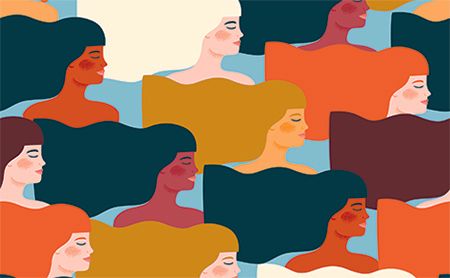Vet med diversity: Why I feel out of place
As a student of color, sometimes I cant connect with classmates on a level deeper than, How are your classes going? We need to explore this more, not pretend everythings fine because homogeneity is easier.
Nadezda Grapes/stock.adobe.com

You may have noticed at nearly every veterinary convention, symposium, seminar and class that the attendee population can be described as … predominantly white. The problem is, this racial homogeneity and limited exposure to multiple perspectives could be leading to misunderstandings and less effective communication skills within the field.
As a current student of color, there are often times where I feel out of place, where I can't connect with my classmates on a level deeper than the superficial conversation topic of how classes are going. Although it does take at least two people to make a connection with another person, I've seen instances where students have difficulty in establishing, and continuing, communications and connections with others who identify differently than they do. Combined with a larger societal apathy towards understanding and valuing diversity, inclusion and multiculturalism, this creates an unwelcoming and exclusionary environment for minority students and further reinforces a culture based on only one set of perspectives and experiences.
What's happening today?
In the academic world, there are few entities to help facilitate community building by bridging the gaps between different identities that make up a veterinary college's student populations. Most schools have a chapter of the student organization, Veterinarians as One Inclusive Community for Empowerment (VOICE). VOICE focuses on educating students on topics related to diversity and equity while also promoting a more inclusive and welcoming environment for all students. Other identity-specific veterinary communities or organizations for Latinos or African-American students are, unfortunately, often too small to sustain memberships or are a “one-person show.”
Nationally, the Association of American Veterinary Medical Colleges (AAVMC) has a Diversity Committee, which developed a diversity-specific accreditation standard to be fulfilled by all veterinary colleges as well as created diversity and inclusivity podcasts. Although the AAVMC has made progress over the course of 30 years and student organizations are active in their respective communities, I don't believe it's enough. There should be more than just one committee, one program, one organization or one student trying to make the veterinary medical field a more progressive, diverse and inclusive community.
What could happen tomorrow?
Personally, I'd like to see more done to encourage veterinary students to acknowledge, embrace and accept diversity, starting with themselves. In 1972, psychologists Shelley Duval and Robert Wicklund pioneered the theory of “Objective Self-Awareness” and proposed that “when we focus our attention on ourselves, we evaluate and compare our current behavior to our internal standards and values.
We become self-conscious as objective evaluators of ourselves.” Self-awareness is a way to further develop the human psyche and better oneself. I believe it's important to always reflect on the relationship between how we think about others and how that can influence our treatment of others. I'd like to see a greater focus placed on this in students' academic coursework and professional socialization. Without a drive to increase self-knowledge, the result may be a disconnect between us and our future veterinary clients, because we can no longer understand, relate to or communicate with them, resulting in a loss of the public's trust and less ability to help animals.
I think one way to become more self-aware, learn more about diversity and learn to work with more diverse groups of people is leadership. I can use my own experience as an example, as I've done this through in number of executive officer roles within different student organizations. Serving in these roles exposed me to people who act and think differently than I do, thus allowing me to grow and change on a daily basis. As a student leader developing my leadership style, I've become more aware of my unconscious biases, and these roles require me to almost daily educate myself to ensure that those biases don't negatively impact my ability to build relationships with others I work with. As a leader, I need to be committed to working with others to build a community that's constantly thriving, one that's inclusive and welcoming to innate differences among its people.
Overall, more attention is needed if the veterinary medical field truly wants to instill change, embrace diversity and create a more open and inclusive community. These qualities can only be achieved if students and other members of the veterinary profession are willing to participate. Changing from the homogeneous community today to a more diverse and inclusive community tomorrow needs acknowledgement of the problem, open-mindedness, introspective dialogue and interpersonal engagement with local communities. Each one of us can make a personal difference, but it will also take support from the AAVMC, veterinary colleges' administrations and the AVMA.
Don't get me wrong-I'm proud to be a veterinary student and future veterinarian. I'm proud of how our field is shifting and becoming more accepting of the differences of others. I'd just like to see more attention directed at this issue.
Kyle L. Granger Jr., MS, is a 2020 candidate for Doctor of Veterinary Medicine at the University of Wisconsin, Madison.